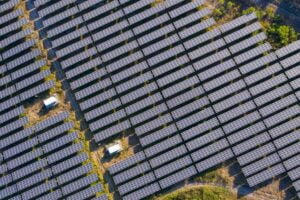Einführung
The world of textiles is a canvas of colors and creativity, where chemistry weaves intricate patterns of pigments and hues. Sodium formate, an unassuming compound with multifaceted properties, takes center stage in dyeing processes, where its unique attributes unleash a symphony of shades. This article embarks on a journey to explore how sodium formate is harnessed in the art of dyeing, unraveling the mechanisms, applications, and the scientific complexities that underlie its chromatic contributions.
- Einführung
- Dyeing: The Alchemy of Color
- Sodium Formate’s Intricate Interactions
- Facilitating Dye Absorption and Fixation
- Enhancing Dye Affinity
- Facilitating Dye-Fiber Bonding
- Preventing Undesirable Side Effects
- Minimizing Metal Ion Interference
- pH Regulation and Buffering*
- Applications Across Textile Industries
- Cotton, Wool, and Silk Dyeing
- Synthetic Fiber Dyeing
- Diving into the Dye Bath: Mechanisms in Action
- FAQ
- Fazit
Dyeing: The Alchemy of Color

Dyeing is a craft that transforms plain fabrics into kaleidoscopic works of art. The process involves imparting color to fibers through interactions between dyes and the textile substrate. Sodium formate, a versatile compound, emerges as a valuable co-star in this chromatic production.
Natriumformiat Intricate Interactions
Sodium formate’s involvement in dyeing is not merely a supporting role; it orchestrates a symphony of interactions that influence dye absorption, fixation, and the overall outcome of the dyeing process.
Facilitating Dye Absorption and Fixation
Enhancing Dye Affinity
Natriumformiat role in dyeing begins by enhancing the affinity between dyes and textile fibers. Through its unique interactions, it promotes the absorption of dye molecules onto the fabric, ensuring vibrant and even color distribution.
Facilitating Dye-Fiber Bonding
Beyond dye absorption, sodium formate continues its performance by facilitating the bonding between dye molecules and textile fibers. This ensures that the colors remain steadfast, resisting fading during subsequent washes.
Preventing Undesirable Side Effects
Minimizing Metal Ion Interference
Sodium formate’s chelating properties play a pivotal role in dyeing. It chaperones metal ions, preventing them from interfering with dye-fiber interactions. This is particularly crucial in avoiding color deviations caused by metal ions present in water or equipment.
pH Regulation and Buffering
Maintaining the correct pH is paramount in dyeing. Natriumformiat buffering capacity shines as it stabilizes the pH of dye baths, ensuring optimal conditions for dye-fiber interactions and preventing color shifts.
Applications Across Textile Industries

Cotton, Wool, and Silk Dyeing
In natural fiber dyeing, sodium formate proves its prowess. It caters to the specific requirements of cotton, wool, and silk, enhancing dye absorption and fixing colors that infuse life into these fibers.
Synthetic Fiber Dyeing
Even in the realm of synthetic fibers, sodium formate leaves its mark. It extends its hand to polyester, nylon, and other synthetic materials, demonstrating its versatility in the world of textiles.
Diving into the Dye Bath: Mechanisms in Action
As fabrics glide into dye baths, sodium formate’s mechanisms come to life. It orchestrates a grand interplay between dye molecules, fiber surfaces, and solution chemistry, culminating in the masterpiece of a brilliantly dyed fabric.
FAQ
F1: Kann Natriumformiat mit allen Arten von Farbstoffen und Stoffen verwendet werden?
A1: Sodium formate’s compatibility varies with different types of dyes and fabrics. Consultation with experts and conducting compatibility tests is advisable.
Q2: Does sodium formate affect the fastness of dye colors on fabrics?
A2: Yes, sodium formate’s role in facilitating dye-fiber bonding contributes to color fastness, ensuring that dyes remain vibrant and resistant to fading.
Q3: Is sodium formate environmentally friendly in dyeing processes?
A3: Sodium formate is generally considered environmentally friendly in dyeing processes, especially when compared to certain other chemicals. Proper disposal practices should still be followed.
Fazit
In the intricate dance of dyeing, sodium formate emerges as a choreographer, orchestrating interactions that give birth to vibrant colors and enduring textiles. Its role in enhancing dye absorption, facilitating bonding, and mitigating undesirable effects showcases its prowess in textile chemistry. As artisans continue to translate creativity onto fabric, sodium formate’s presence underscores the harmonious blend of science and artistry that defines the world of textile dyeing.


